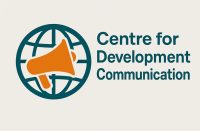In the development work that we do, we often have a huge obsession with data. I have read many reports presenting data in beautiful tables and graphs, carefully designed with colours. But too often, these outputs remain unread, misunderstood, or ignored by the very people they are meant to serve. The problem is not the data itself; it is how we communicate it.
We often forget that the real power of a report lies not in its numbers, but in its ability to interpret those numbers in a way that resonates with people.
And that is why development communication teaches us that meaningful change happens when information speaks to lived experiences, when evidence is translated into stories that communities can see themselves in. Beautiful graphs and complex charts may impress our latest donors and statisticians, but they rarely inspire action on the ground — mainly because the people who are the main consumers of the information cannot read and interpret what it means.
What we need is simplified data storytelling — communication that humanises numbers, contextualises trends, and positions communities at the centre of the narrative. This approach not only informs, but motivates, empowers, and amplifies local voices.
Yet, in many development organisations, this is still neglected. Data is collected, processed, and presented as if producing the numbers alone is enough. But numbers without meaning are like seeds that never see sunlight: full of potential, but failing to grow.
It is time to shift our focus. Development practitioners must invest in creating narratives that marry evidence with empathy, that turn raw data into actionable insights, and that place communities — not reports — at the heart of decision-making.
The core issues for interrogation for us as development practitioners are:
(1) Are development organisations over-relying on data at the expense of storytelling?
(2) How can we better equip teams to translate numbers into meaningful narratives for communities?
(3) Should donors prioritise funding for effective communication of data rather than just its collection?
The challenge for all of us is clear: if development communication is to catalyse real change, we must move beyond charts and tables. We must tell stories with data that matter — stories in which communities recognise themselves and see pathways to transformation.
Audu Liberty Oseni,
Director, Centre for Development Communication
